Early, mid or late season? An expert guide to the different types of potatoes
Early or late season, floury or waxy, red or white-skinned? Recognize the differences between potato varieties to pick the best for your needs
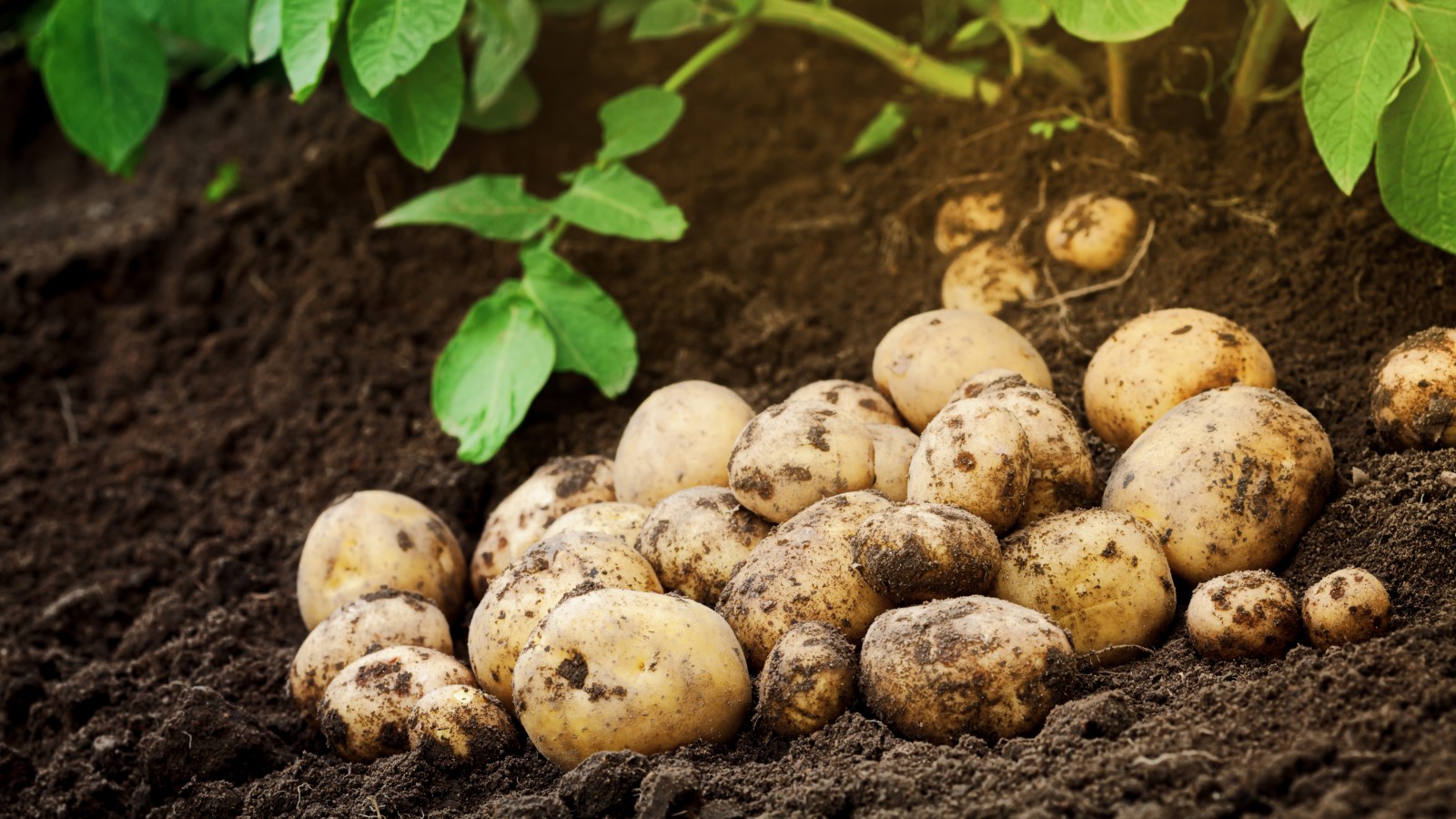

Choosing between the different types of potatoes can be tricky as there are thousands of varieties. You will see references to different classifications, types, shapes, even colors. However, all potato varieties tend to be classed into distinct categories, namely early season and late season potatoes.
There are further sub-categories, with other terms for distinct types and even descriptions for culinary purposes. It can be daunting browsing the catalogs if you are new to growing potatoes.
Once you're up to speed with the different types available, you'll be able to enjoy growing potatoes year-after-year. And with so many different options available, there is a world of homegrown tubers to discover and enjoy.
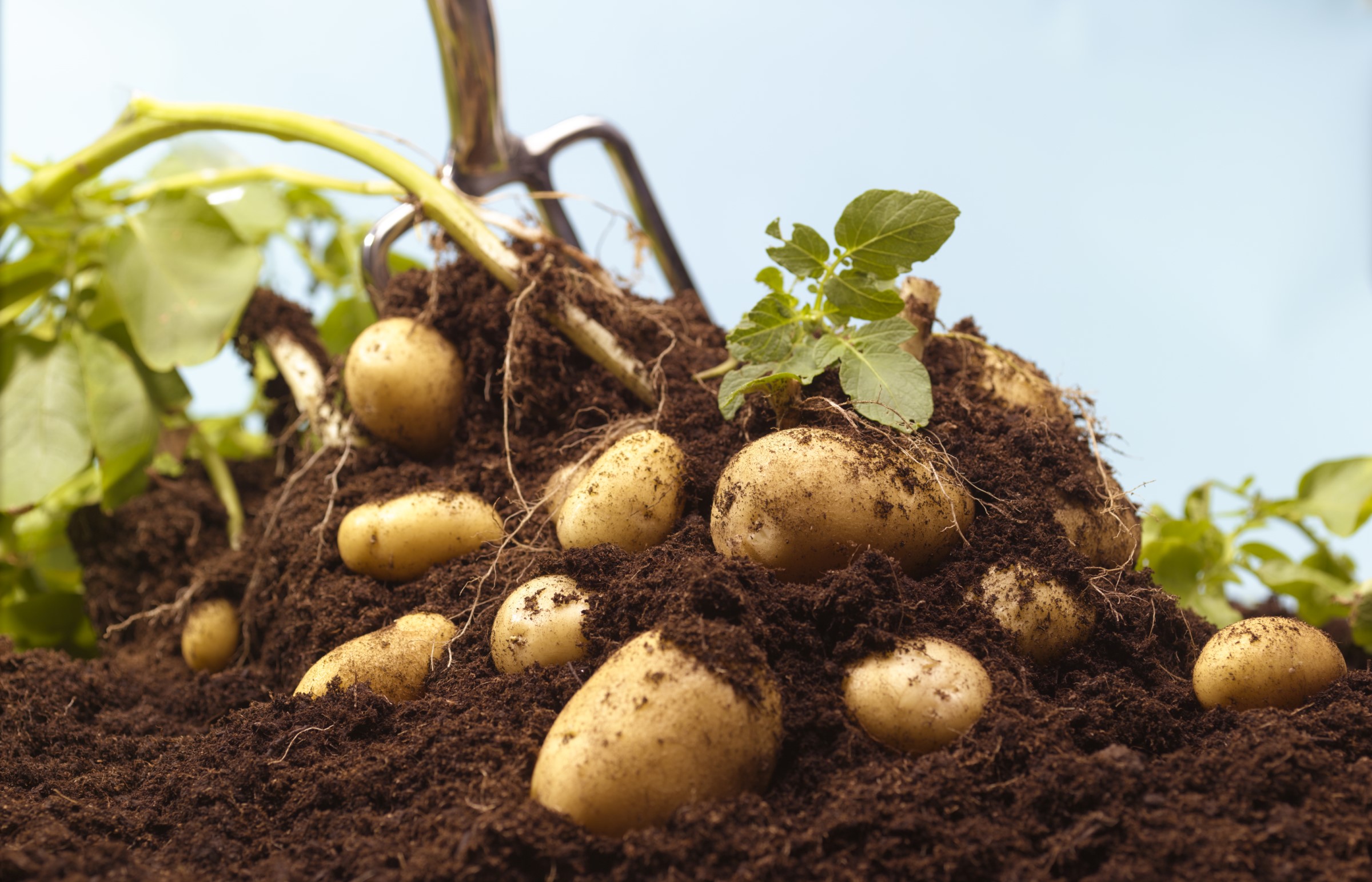
New potatoes can be harvested from early summer

Drew is a former professional gardener who has grown edibles for the last 10 years. He has specialized as a kitchen gardener, growing a wide range of vegetables in productive walled gardens specifically for chefs. He has grown many varieties of potatoes over the years.
What are the main types of potatoes?
When it comes to the different types of potato to grow, there are three main ones to look out for. These are grouped according to the timings of when they should typically be planted and harvest. The exact timings for when to plant potatoes will vary depending on your location.
- Early season potatoes Also known as first earlies, these are the first potatoes you plant in the year and the first to be ready to harvest. They can often be referred to as new potatoes too, and are planted in early spring and then harvested in early summer. They are the first of the annual potato harvests and take between 10-12 weeks after planting. Recommended first early varieties include Rio Grande Russet (available from Burpee) and Rocket.
- Mid season potatoes These are also known as second earlies. Very similar to early season potatoes, and planted only a few weeks later. They take around 13 weeks to harvest. Both early and mid season potatoes are commonly chitted in order to get an earlier harvest. Chitting potatoes is a simple process to sprout seed potatoes earlier indoors when the outside ground is not yet warm enough for planting. Recommended mid season varieties include Yukon Gold and Red Pontiac, both available from Burpee.
- Late season potatoes Also known as maincrop potatoes, these have a longer growing season, producing bigger potatoes and a bigger harvest. These varieties are planted at the end of spring and are traditionally ready to harvest late summer and into fall. Recommended late season varieties include Kennebec (available from Burpee), Maris Piper and Russet Burbank. You can also buy late season seed potatoes at Amazon.
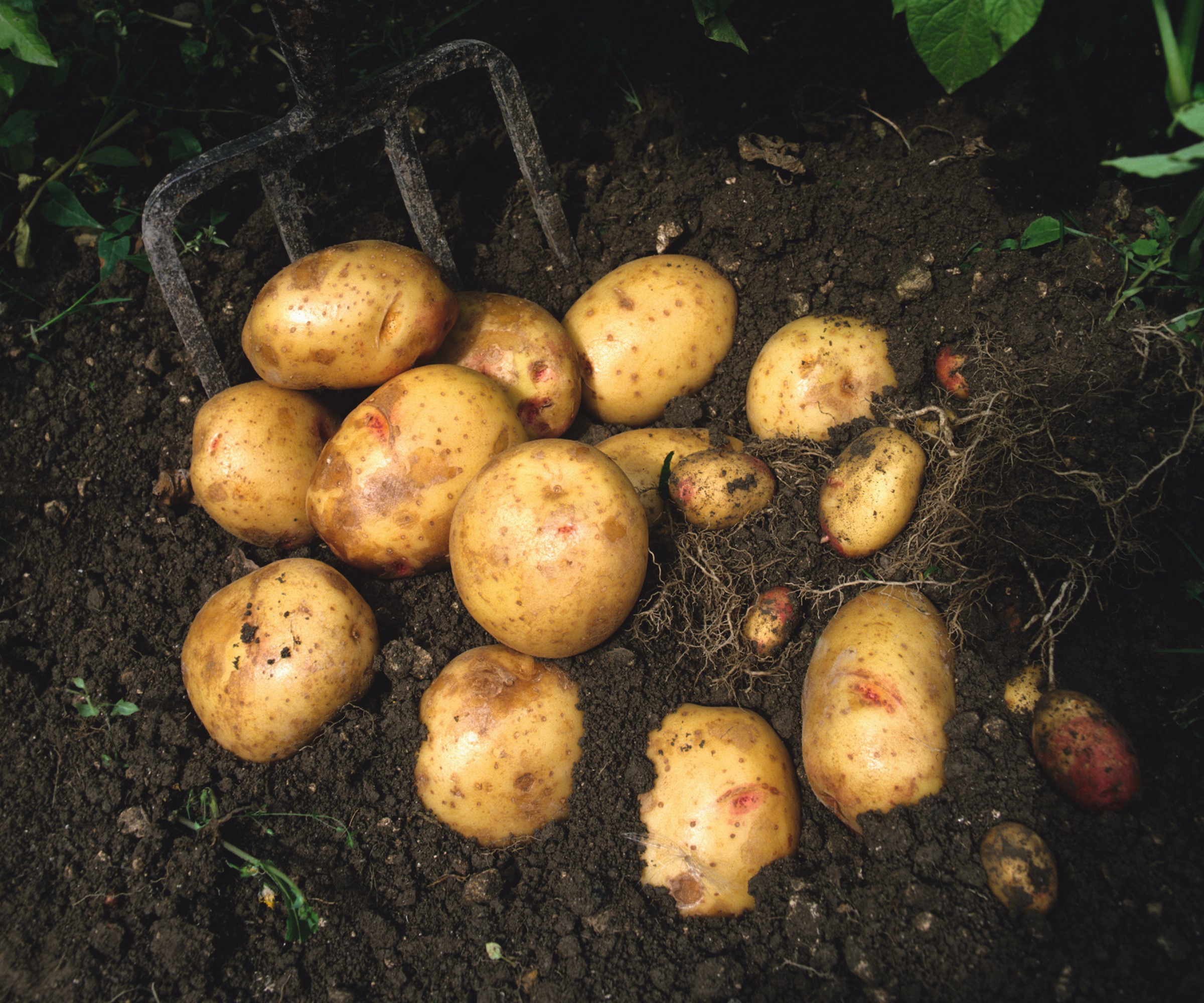
Late season potatoes can be lifted in fall and stored through winter
Lucy Chamberlain, vegetable expert for Amateur Gardening, adds that late season or maincrop potatoes do store better and last longer than the early varieties. Knowing how to store potatoes efficiently means you can enjoy your crop of homegrown potatoes for the maximum amount of time.
She says: 'Unlike new potatoes, maincrops are allowed to swell to a good size. They stay in the ground until when their skins have set, at which point they are lifted and stored for use during fall, winter and early spring.'
When planning your vegetable growing for the season, take into consideration the timings of when to harvest potatoes variety-by-variety. Combining growing early and late season varieties can result in the longest potato season possible, from early summer into late fall.
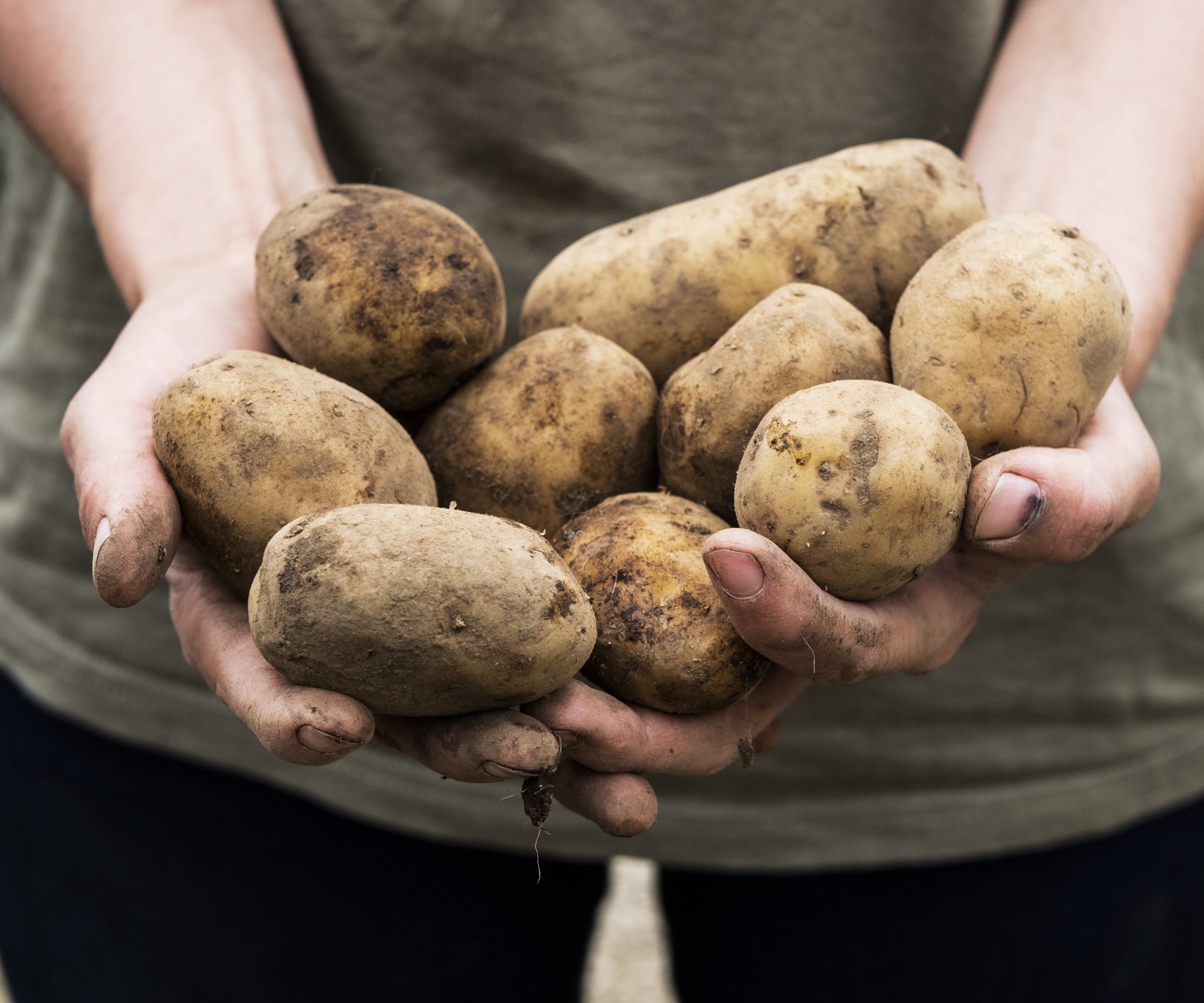
Potatoes are an easy crop to grow for a beginner
The 7 different categories of potatoes
Among the thousands of different potato varieties that can be grown, there are several specific categories that each potato fits into. There are seven distinct types, relating to size, shape, skin, and flesh. The size and shape may be key factors to consider, such as if you have a small vegetable garden and need to grow potatoes in a container or bag.
- Russet: Medium to large oblong potatoes with netted skin and white flesh. Grow up to 6 inches long and 2 inches diameter.
- Red: Small potatoes with red skin and crisp white flesh. They are round in shape with thin skin.
- White: Small to medium sized round potatoes with freckled skin and white flesh.
- Yellow: Oblong potatoes with light golden skin and yellow flesh.
- Purple: Medium size oblong-shaped potatoes with blue-to-purple skins and blue flesh.
- Fingerling: Small finger-shaped oblong potatoes that are 2-4 inches long and 1 inch. diameter. Can come in several colors - including white, purple, red or yellow - and are thin-skinned, so can be cooked unpeeled.
- Petite: A name given to small marble-sized new potatoes of any colors.
There are also other distinctive characteristics you will commonly see in the descriptions of potatoes for culinary purposes. Potato varieties are described in terms of being floury or waxy.
In this case, waxy potatoes hold shape and are firm, while floury potatoes, also often referred to as starchy, go fluffy when cooked. That makes them more suited for different uses in the kitchen. You will see some referred to as all-purpose.
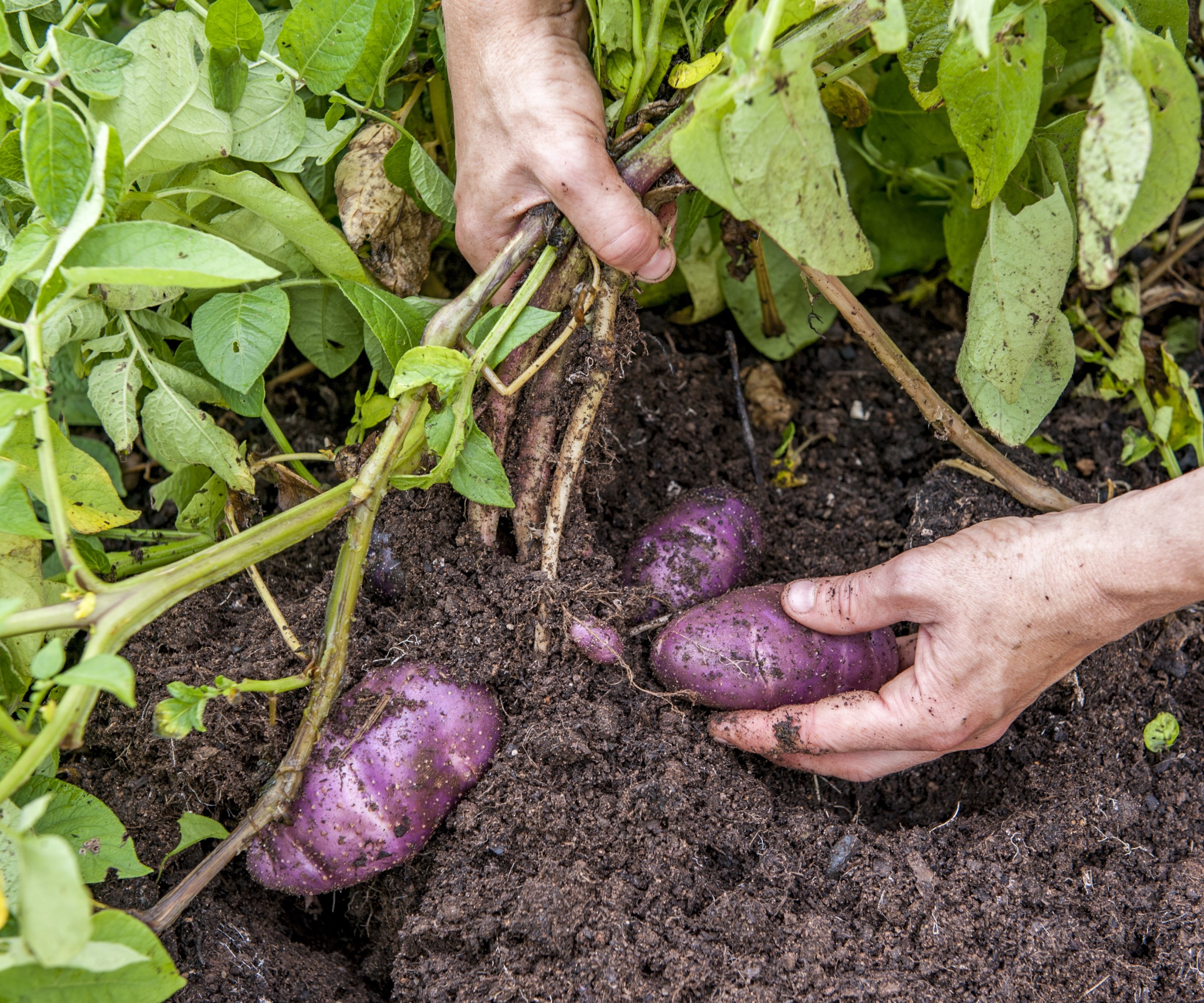
Potatoes come in many colors not commonly seen in retailers
How many varieties of potatoes are there?
There are thought to be more than 4,000 varieties of potatoes in the world that are edible. Of these, it is thought that more than 200 varieties are commonly sold throughout the US.
The most popular types of potato in the US are Russet types, which are ideal for french fries. Red and white potatoes are also highly popular types. Consider what uses you have for potatoes when planning a kitchen garden to help narrow down the wide selection of potatoes available to grow.
Sign up to the Homes & Gardens newsletter
Design expertise in your inbox – from inspiring decorating ideas and beautiful celebrity homes to practical gardening advice and shopping round-ups.

Drew’s passion for gardening started with growing vegetables and salad in raised beds in a small urban terrace garden. He has worked as a professional gardener in historic gardens and specialises in growing vegetables, fruit, herbs, and cut flowers as a kitchen gardener. That passion for growing extends to being an allotmenteer, garden blogger, and producing how-to gardening guides for websites. Drew was shortlisted for the New Talent of the Year award at the 2023 Garden Media Guild Awards.
-
 I've spent over 200 hours testing vacuums and swear by my two Dysons – this is how I properly clean a Dyson vacuum filter for longer-lasting appliances
I've spent over 200 hours testing vacuums and swear by my two Dysons – this is how I properly clean a Dyson vacuum filter for longer-lasting appliancesYour Dyson vacuum will last much longer and clean at its best
By Dan Fauzi Published
-
 Bethenny Frankel calls this $695 machine the 'Rolls-Royce Cullinan of coffee' – it's a must-have luxury buy for iced-coffee lovers this springtime
Bethenny Frankel calls this $695 machine the 'Rolls-Royce Cullinan of coffee' – it's a must-have luxury buy for iced-coffee lovers this springtimeThe Real Housewife swears by a luxurious machine that makes nitro cold brew, cold brew, and cold espresso at the touch of a button – here's why it's worth it
By Sophie Edwards Published